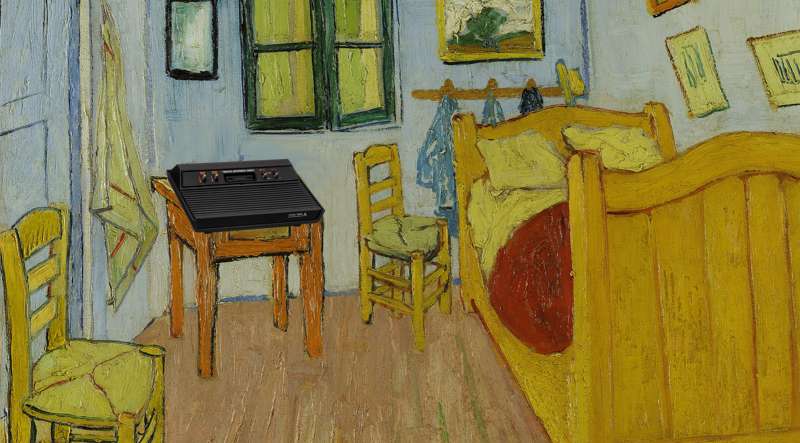Atari 2600 - the console that started it all
It wasn't the first console, but it was the first to be successful. And it is still alive.

The Atari 2600, originally called VCS, was my first game console. Officially produced for almost fifteen years (much longer, considering eastern fakes), the machine was one of the first consoles to use a cartridge as a game carrier. Perhaps, as the first one, it used the 6502 processor (or rather, its trimmed version - 6507).
It only had 128 bytes (yes, bytes) of RAM. The graphics chip allowed to generate graphics with a resolution of 40 x 192 px, although an efficient programmer was able to squeeze 160 x 192 px. Responsible for the graphics was a primitive (even compared to 8-bit computers) TIA (Television Interface Adapter) chip. Due to the small amount of RAM, TIA does not support frame buffer, instead the graphics are generated on every scan line.
The CPU is MOS 6507, or its redesigned version in a cheaper, 28-pin DIP package, clocked at 1.19 MHz. Later, the same processor was used, among others, at Atari floppy disk drives.
The console was sold from 1977 in a version with six switches, in 1980 a version with four switches was launched. In 1980, the name of the console was also changed from Atari VCS to Atari 2600.
The games Space Invaders and Pac-Man were decisive for the market success of the console. My favourite titles are Berzerk and River Raid.
One of the most unusual accessories for the Atari 2600 was the CompuMate, produced by Spectravideo in 1983, an overlay for the Atari 2600 containing a membrane keyboard and jack output. Thanks to this add-on, the console could be turned into a full-fledged, eight-bit computer.
Homebrew games are still being made for the Atari 2600. The most famous title seems to be Halo 2600 - the port of the game Halo, released in 2010.
Very interesting is the batariBasic project, as it makes development of games for the Atari 2600 on modern computers easy.
Technical specifications:
| CPU: | 6507 @ 1.19 MHz |
|---|---|
| Input/Output interface: | MOS 6532 A.K.A. RIOT (two joystics ports) |
| Sound: | TIA (two, four-bit, audio channels) |
| Memory: | 128 B |
Illustration: Vincent van Gogh - The Atari 2600 in Bedroom in Arles, year 1888.

